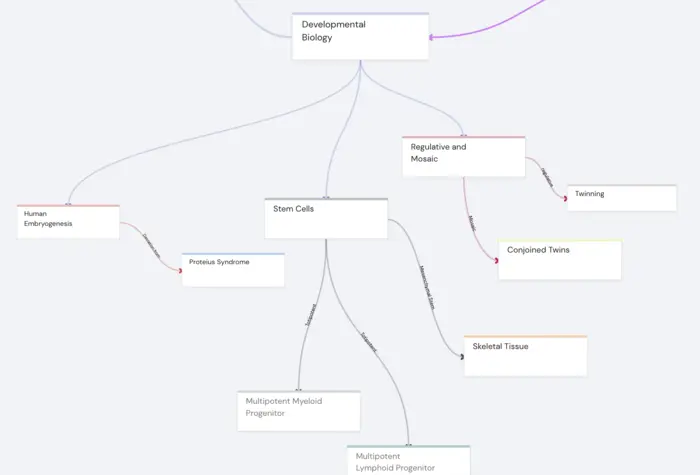Introduction
Learning a new language, such as Mandarin, can often feel like an uphill battle. With thousands of characters to memorize, complex grammar rules, and nuances in pronunciation, the task can seem daunting. If you're a lifelong learner, eager to harness the power of your brain and science-backed learning methods, this guide is for you. We're going to delve into how to master Anki, a powerful flashcard app, for optimal learning. Our focus will be on understanding the cognitive science behind effective learning, creating a streamlined study strategy, and integrating Anki with Traverse for an enhanced learning experience.
Understanding Anki: A Powerful Learning Tool
Anki, it's like having a personal tutor in your pocket! But what exactly is Anki, and how can it transform your learning process? Let's demystify this learning tool that's taking the world of education by storm.
Anki is a flashcard app that leverages the science of the Spaced Repetition System (SRS) to maximize your learning efficiency. Anki is derived from the Japanese word for "memorizing," and it lives up to its name by helping you commit information to long-term memory. This open-source software is more than just a digital flashcard system; it's a scientifically designed learning tool that uses smart algorithms to optimize your study sessions.
The crux of Anki's power lies in its clever manipulation of a concept known as the forgetting curve. The forgetting curve suggests that memory retention decays over time, but Anki's SRS strategically exposes you to information that you're on the verge of forgetting, thereby strengthening your memory. It's like a personal trainer for your brain, ensuring you work on the areas that need the most attention.
Unlike conventional flashcards, Anki doesn't leave your review schedule to chance. It meticulously schedules reviews so that you don't have to worry about which topic to study. The software automatically adjusts the frequency of flashcard reviews based on your performance. If you're consistently getting a card correct, Anki will increase the interval before showing it again. On the other hand, if you're struggling with a card, Anki will show it more frequently until you've mastered it.
Anki brings a lot to the table, especially when it comes to language learning. With its customizable flashcards, you can tailor your learning experience to your personal style. Whether you're focusing on listening comprehension, reading, or speaking, Anki can be adjusted to meet your needs. You can load it with Anki Decks in various languages, providing a well-rounded approach to language learning.
However, it's important to note that Anki is not a magic pill. As efficient as it is, Anki is a supplement to your study process and not a substitute for poor learning skills. It covers the final one-third of the memory's core processes for information encoding, which is retrieval. For Anki to work its magic, the first two-thirds of your study system, encoding, and storage, need to be effective.
In the next sections, we will delve into setting up Anki for optimal learning, creating an effective card strategy, and understanding how to make the most out of this powerful tool. Learning Mandarin or any other subject has never been more efficient!
Setting Up Anki for Optimal Learning
Setting up Anki for optimal learning is akin to setting the foundation for a house. The stronger it is, the better the structure will hold up. Let's start off by choosing the right device for Anki.
Choosing the Right Device for Anki
While Anki is available on multiple platforms, including mobile, choosing the right device for Anki depends on your individual needs. Desktop or laptop devices offer a larger screen, which may enhance your ability to visualize complex concepts, especially when learning Mandarin characters. Moreover, larger devices allow you to have both hands free for note-taking, which can be an essential part of your study process.
Creating an Effective Card Strategy
Once you've chosen your device, it's time to create your card strategy. Anki's unique feature of shared decks can be a gold mine for learners. However, just downloading decks created by others may not be the most efficient way to learn.
Creating your own cards can be powerful as it involves active engagement with the material you're studying. This process is known as elaborative encoding and can significantly improve your recall. Consider getting the best of both worlds by downloading some decks and creating some of your own. This way, you benefit from shared knowledge as well as personal engagement with the material.
Making and Customizing Your Anki Cards
The next step in mastering Anki for optimal learning is making and customizing your Anki cards. Personalizing each card, as suggested by language learning expert Olly Richards, can make a big difference in your learning process. For example, when learning Mandarin, you could add context to a vocabulary word by using it in a sentence, or adding an image that helps you remember the character.
Reviewing Your Cards: Best Practices
Reviewing your cards is where the magic of Anki's spaced repetition comes into play. By showing you cards based on your mastery of the material, Anki ensures that you spend time on the cards you need to work on. The key here is to be honest and accurate about your level of recall. Rushing through cards or overestimating your recall can hinder your progress.
Going the Extra Mile: Advanced Anki Techniques
For those willing to go the extra mile, there are advanced techniques to further optimize your learning with Anki. These could include using tags for easier review, suspending cards you don't want to see for a while, or importing specific decks that focus on areas you want to strengthen.
By setting up Anki correctly, creating an effective card strategy, making and customizing cards, and reviewing them with best practices, you're setting the stage for an optimal learning experience. Whether you're mastering Mandarin or any other subject, Anki can be your secret weapon. But remember, Anki is a tool, and its effectiveness lies in your hands. With discipline, consistency, and the right strategies, Anki can turn your learning journey into a rewarding experience.
Anki Use Cases: From Language Learning to Medical Studies
You've got your Anki set up, your cards customized, and you're ready to dive into the world of learning. But Anki isn't just a one-size-fits-all tool. Its flexibility allows it to be tailored to a multitude of use cases, each requiring a unique approach. Let's zoom in on two primary areas where Anki is commonly utilized: language learning and medical studies.
Mastering Mandarin with Anki and Traverse
Navigating the path to Mandarin mastery can feel like climbing a steep mountain. But, with Anki's flashcard app and its powerful spaced repetition algorithm, this mountain can turn into a manageable hill. Anki decks are available in Mandarin, categorized by proficiency levels, making it easy to find the right one for you. You can customize your study experience, adjusting the number of new cards you see each day and the intervals at which cards are shown.
But to truly unlock the power of Anki in your Mandarin learning journey, consider coupling it with Traverse, a unique learning app that merges mind mapping, spaced repetition flashcards, and connected note-taking all in one platform. Traverse assists you in visualizing how different aspects of your Mandarin study material connect, facilitating effective learning and deep understanding. With Anki and Traverse, you can transform your Mandarin learning experience from a daunting task into an engaging adventure.
Excelling in Medical School with Anki
Medical studies are another major field where Anki shines brightly. The vast amount of information that medical students need to master can be overwhelming. Anki, however, makes this avalanche of information manageable.
By using Anki, you can schedule reviews automatically, so you don’t have to worry about which specific topic to study. The system allows you to study only what needs reviewing, encoding information into long term memory at will, rather than by chance. You can also turn downtime into productive study time by using Anki during breaks, allowing you to review a large number of items effortlessly.
In essence, whether you're on the path to mastering Mandarin or acing your medical studies, Anki, when used correctly, can be a game-changer. Its power is not just in the software, but how you leverage it in your learning journey. The next section will guide you on how to integrate Anki with Traverse for an enhanced learning experience.
Integrating Anki with Traverse for Enhanced Learning
The beauty of Anki lies in its versatility and adaptability. As an open-source flashcard app, Anki can be integrated with other learning tools for enhanced learning experiences. One such tool is Traverse, an app that combines mind mapping, spaced repetition flashcards, and connected note-taking in one platform. Let's delve into how integrating Anki with Traverse can supercharge your learning process.
Importing Your Anki Decks into Traverse
Thanks to its Anki-compatible design, Traverse allows you to import any Anki APKG deck into the platform. The scheduling information is preserved, enabling you to pick up exactly where you left off. This means your study progress is not disrupted, and you can continue building on your knowledge base seamlessly.
Why does this matter? Convenience aside, importing your Anki decks into Traverse gives you the opportunity to visually organize all your decks and cards in a mind map. This can be a game-changer, especially when learning complex topics or languages like Mandarin. By visually mapping out your knowledge, you can literally see how concepts or words connect, deepening your understanding and aiding memorization.
Moreover, Traverse keeps a history of all your Anki imports. This means you can revisit them anytime, offering flexibility in your learning journey.
Utilizing Traverse's Unique Features for Anki Learning
Traverse is not just a platform to import your Anki decks; it's a learning tool that enhances your Anki experience. Once you've imported your decks, you can use Traverse's unique features to boost your learning process. For instance, you can add notes and upload all your study materials, centralizing your resources and ensuring you have everything you need in one place.
Furthermore, Traverse provides the option to practice your flashcards in the context of their respective mind maps. This contextual learning can significantly improve your recall ability, especially for complex topics or languages where understanding the relationship between concepts or words is crucial.
In essence, integrating Anki with Traverse gives you the best of both worlds. You get the proven effectiveness of spaced repetition from Anki and the visual, connected learning style from Traverse. This powerful combination can significantly improve your learning efficiency, whether you're mastering Mandarin or excelling in another field.
In the next section, we'll discuss the role of discipline in using Anki effectively, an often overlooked but crucial aspect of successful learning.

The Role of Discipline in Using Anki Effectively
Discipline and consistency are your secret weapons when it comes to mastering Anki for optimal learning. Remember, Anki is not a magic pill that instantly downloads knowledge into your brain. It's a tool, a powerful one, but a tool nonetheless. It requires your active engagement and continued commitment to yield the desired results.
Consistency is Key
The spaced repetition system (SRS) that Anki uses is designed to optimize memory retention by timing the reviews just when you're about to forget the information. This powerful system, however, can only work to its full potential if you are consistent with your reviews. This means that you need to use Anki regularly, ideally daily, to get the maximum benefit from it.
If you start skipping days, the efficiency of the system starts to decline. Picture the SRS as a finely tuned machine. If you don't use it regularly, the gears start to rust, and the machine doesn't work as effectively.
Honesty in Self-Assessment
As you review your Anki cards, you will be asked to rate your recall of the information. This is a critical part of the learning process, as your ratings determine when the card will appear again in your reviews.
It's essential to be honest in your self-assessment. If you found a card challenging, rate it as difficult, even if it's tempting to rate it as easy to make the review session shorter. Remember, the goal is not to complete the review as quickly as possible, but to retain the information as effectively as possible.
Active Engagement
Active engagement is another vital aspect of using Anki effectively. As Olly Richards, a language learning expert mentioned, personalizing each card can greatly enhance its effectiveness. This involves more than just passive repetition; it's about transforming the information mentally through a process called elaborative encoding.
For instance, if you're learning Mandarin, don't just memorize the characters. Try to associate them with images, stories, or related words. This active engagement can significantly boost your memory retention.
Discipline in Card Creation
Lastly, discipline also plays a role in the process of creating Anki cards. It's easy to get excited and create hundreds of cards at once. But remember, every card you create is a card you'll have to review. Instead, aim for a sustainable pace, creating a manageable number of cards each day.
In conclusion, using Anki effectively requires a disciplined approach, consistent usage, honesty in self-assessment, active engagement with the material, and a measured approach to card creation. By adopting these habits, you'll be well on your way to mastering Anki for optimal learning. In the next section, we'll wrap up this guide and set you on your path to success with Anki.
Conclusion: Your Path to Mastering Anki for Optimal Learning
And there you have it! You've just journeyed through the ins and outs of mastering Anki for optimal learning. By now, you should have a robust understanding of how to set up Anki, create effective flashcards, review them using the best practices, and even integrate Anki with Traverse for an enhanced learning experience.
Remember, Anki is a powerful tool for intentional learning – it's designed to help you commit information into long-term memory, not just for a test, but for the long haul. It's not a magic pill, but when used correctly, it could be your ticket to mastering anything from Mandarin to medical studies.
Choosing the right device for Anki, be it a laptop, desktop, or mobile, is the first step. But the real power comes from crafting your own flashcards. By personalizing your cards, you engage in a process called elaborative encoding, which is shown to improve recall. Anki also allows you to share decks, giving you the best of both worlds.
Reviewing your cards is an essential part of the Anki learning process. Honesty in self-assessment is critical here. If you're not honest about your level of recall, Anki's algorithm won't be able to optimize your review schedule effectively.
Integrating Anki with Traverse opens up a whole new level of possibilities. You can import your Anki decks into Traverse, leverage its user-friendly interface, and utilize its unique features to supercharge your Anki learning experience.
Finally, remember that discipline is key. As powerful as Anki is, it’s a tool to supplement your learning process. It's not a substitute for poor learning skills. Consistency, dedication, and a proactive approach to learning are vital.
Now, it's your turn to take the reins. Embrace the process, leverage the tools at your disposal, and embark on the path to mastering Anki for optimal learning. Every card reviewed, every concept learned, and every breakthrough in understanding is a step closer to achieving your learning goals.
Remember, the most effective learning tool is the one that you actually use, and now, equipped with these insights on Anki, you're primed to make the most of this powerful software. So, get started, experiment, adapt, and find the best way to use Anki that works for you.
Here's to your success in mastering Anki for optimal learning. Happy studying!

